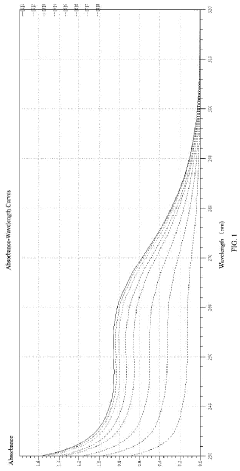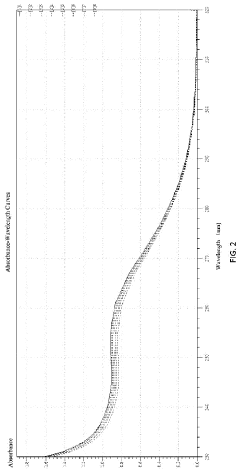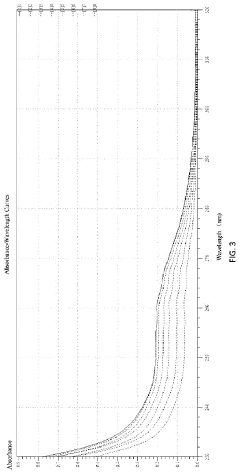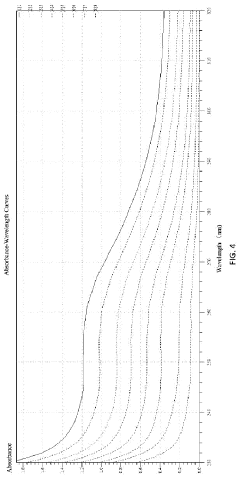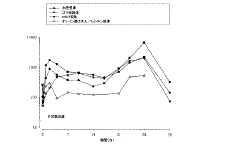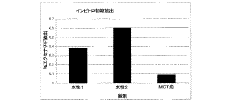How Sustained Release Formulations Use Polypropylene Carriers
JUL 21, 20259 MIN READ
Generate Your Research Report Instantly with AI Agent
Patsnap Eureka helps you evaluate technical feasibility & market potential.
Polypropylene Carriers in Sustained Release
Polypropylene carriers have emerged as a versatile and effective material in the development of sustained release formulations. These carriers offer unique properties that make them particularly suitable for controlled drug delivery systems. The porous structure of polypropylene allows for the incorporation of various active pharmaceutical ingredients (APIs) while providing a stable matrix for their gradual release over extended periods.
One of the key advantages of polypropylene carriers is their biocompatibility and non-toxicity, making them safe for use in a wide range of pharmaceutical applications. The material's chemical inertness ensures that it does not interact with the encapsulated drugs, preserving their efficacy and stability throughout the release period. Additionally, polypropylene's low density and high tensile strength contribute to the development of lightweight and durable formulations.
In sustained release formulations, polypropylene carriers can be engineered to achieve specific release profiles. By manipulating the carrier's porosity, surface area, and particle size, researchers can fine-tune the drug release kinetics to meet desired therapeutic outcomes. This level of control allows for the development of formulations that maintain optimal drug concentrations in the body over prolonged periods, reducing dosing frequency and improving patient compliance.
The versatility of polypropylene carriers extends to their compatibility with various drug types, including small molecules, proteins, and peptides. This broad applicability has led to their use in diverse therapeutic areas, such as pain management, cardiovascular diseases, and hormone replacement therapies. The carriers can be fabricated into different forms, such as microspheres, nanoparticles, and implants, further expanding their potential applications in drug delivery.
Recent advancements in manufacturing technologies have enhanced the precision and reproducibility of polypropylene carrier production. Techniques like melt extrusion and spray drying have been optimized to create carriers with consistent physical and chemical properties, ensuring batch-to-batch uniformity in drug release characteristics. These improvements have significantly contributed to the reliability and scalability of sustained release formulations using polypropylene carriers.
The use of polypropylene carriers in sustained release formulations has also addressed challenges associated with poorly soluble drugs. By incorporating these drugs into the porous structure of polypropylene, their dissolution rate and bioavailability can be significantly improved. This approach has opened new possibilities for the development of formulations for drugs that were previously limited by their solubility profiles.
One of the key advantages of polypropylene carriers is their biocompatibility and non-toxicity, making them safe for use in a wide range of pharmaceutical applications. The material's chemical inertness ensures that it does not interact with the encapsulated drugs, preserving their efficacy and stability throughout the release period. Additionally, polypropylene's low density and high tensile strength contribute to the development of lightweight and durable formulations.
In sustained release formulations, polypropylene carriers can be engineered to achieve specific release profiles. By manipulating the carrier's porosity, surface area, and particle size, researchers can fine-tune the drug release kinetics to meet desired therapeutic outcomes. This level of control allows for the development of formulations that maintain optimal drug concentrations in the body over prolonged periods, reducing dosing frequency and improving patient compliance.
The versatility of polypropylene carriers extends to their compatibility with various drug types, including small molecules, proteins, and peptides. This broad applicability has led to their use in diverse therapeutic areas, such as pain management, cardiovascular diseases, and hormone replacement therapies. The carriers can be fabricated into different forms, such as microspheres, nanoparticles, and implants, further expanding their potential applications in drug delivery.
Recent advancements in manufacturing technologies have enhanced the precision and reproducibility of polypropylene carrier production. Techniques like melt extrusion and spray drying have been optimized to create carriers with consistent physical and chemical properties, ensuring batch-to-batch uniformity in drug release characteristics. These improvements have significantly contributed to the reliability and scalability of sustained release formulations using polypropylene carriers.
The use of polypropylene carriers in sustained release formulations has also addressed challenges associated with poorly soluble drugs. By incorporating these drugs into the porous structure of polypropylene, their dissolution rate and bioavailability can be significantly improved. This approach has opened new possibilities for the development of formulations for drugs that were previously limited by their solubility profiles.
Market Analysis for Controlled Drug Delivery
The controlled drug delivery market has experienced significant growth in recent years, driven by the increasing prevalence of chronic diseases and the need for more effective and patient-friendly treatment options. This market segment encompasses a wide range of technologies and formulations designed to optimize drug release profiles, improve therapeutic efficacy, and enhance patient compliance.
The global controlled drug delivery market was valued at approximately $29.6 billion in 2020 and is projected to reach $41.2 billion by 2026, growing at a compound annual growth rate (CAGR) of 5.8% during the forecast period. This growth is attributed to several factors, including the rising demand for targeted and sustained-release drug formulations, advancements in polymer science and nanotechnology, and the increasing adoption of biologics and personalized medicine.
Within this market, sustained release formulations using polypropylene carriers represent a promising segment. Polypropylene, a versatile and biocompatible polymer, offers several advantages in controlled drug delivery applications, including excellent chemical resistance, low density, and cost-effectiveness. These properties make polypropylene an attractive choice for developing sustained release drug delivery systems.
The demand for polypropylene-based sustained release formulations is particularly strong in therapeutic areas such as pain management, cardiovascular diseases, and central nervous system disorders. These applications benefit from the ability of polypropylene carriers to maintain consistent drug levels over extended periods, reducing dosing frequency and improving patient adherence to treatment regimens.
Geographically, North America dominates the controlled drug delivery market, followed by Europe and Asia-Pacific. The United States, in particular, holds a significant market share due to its advanced healthcare infrastructure, high R&D investments, and favorable regulatory environment. However, emerging economies in Asia-Pacific, such as China and India, are expected to witness rapid growth in the coming years, driven by increasing healthcare expenditure and growing awareness of advanced drug delivery technologies.
Key market players in the controlled drug delivery space include Johnson & Johnson, Pfizer, Novartis, Merck, and AstraZeneca. These companies are actively investing in research and development to expand their product portfolios and gain a competitive edge in the market. Additionally, several specialized drug delivery companies and contract development and manufacturing organizations (CDMOs) are focusing on developing innovative sustained release formulations using polypropylene and other advanced materials.
The market for controlled drug delivery, including sustained release formulations using polypropylene carriers, faces some challenges, such as high development costs, complex regulatory requirements, and potential safety concerns. However, the overall outlook remains positive, driven by the growing demand for more efficient and patient-centric drug delivery solutions.
The global controlled drug delivery market was valued at approximately $29.6 billion in 2020 and is projected to reach $41.2 billion by 2026, growing at a compound annual growth rate (CAGR) of 5.8% during the forecast period. This growth is attributed to several factors, including the rising demand for targeted and sustained-release drug formulations, advancements in polymer science and nanotechnology, and the increasing adoption of biologics and personalized medicine.
Within this market, sustained release formulations using polypropylene carriers represent a promising segment. Polypropylene, a versatile and biocompatible polymer, offers several advantages in controlled drug delivery applications, including excellent chemical resistance, low density, and cost-effectiveness. These properties make polypropylene an attractive choice for developing sustained release drug delivery systems.
The demand for polypropylene-based sustained release formulations is particularly strong in therapeutic areas such as pain management, cardiovascular diseases, and central nervous system disorders. These applications benefit from the ability of polypropylene carriers to maintain consistent drug levels over extended periods, reducing dosing frequency and improving patient adherence to treatment regimens.
Geographically, North America dominates the controlled drug delivery market, followed by Europe and Asia-Pacific. The United States, in particular, holds a significant market share due to its advanced healthcare infrastructure, high R&D investments, and favorable regulatory environment. However, emerging economies in Asia-Pacific, such as China and India, are expected to witness rapid growth in the coming years, driven by increasing healthcare expenditure and growing awareness of advanced drug delivery technologies.
Key market players in the controlled drug delivery space include Johnson & Johnson, Pfizer, Novartis, Merck, and AstraZeneca. These companies are actively investing in research and development to expand their product portfolios and gain a competitive edge in the market. Additionally, several specialized drug delivery companies and contract development and manufacturing organizations (CDMOs) are focusing on developing innovative sustained release formulations using polypropylene and other advanced materials.
The market for controlled drug delivery, including sustained release formulations using polypropylene carriers, faces some challenges, such as high development costs, complex regulatory requirements, and potential safety concerns. However, the overall outlook remains positive, driven by the growing demand for more efficient and patient-centric drug delivery solutions.
Current Challenges in Sustained Release Technology
Sustained release technology has made significant strides in recent years, yet several challenges persist in the development and optimization of these formulations. One of the primary hurdles is achieving consistent and predictable drug release rates over extended periods. The complex interplay between the drug, carrier material, and physiological environment often leads to variability in release profiles, making it difficult to maintain therapeutic levels within the desired range.
Another significant challenge lies in the design of formulations that can withstand the harsh conditions of the gastrointestinal tract while still providing controlled release. Factors such as pH variations, enzymatic activity, and transit time can significantly impact the performance of sustained release systems, potentially leading to dose dumping or incomplete drug release.
The selection of appropriate excipients, particularly carrier materials like polypropylene, presents its own set of challenges. While polypropylene offers advantages such as chemical inertness and stability, its hydrophobic nature can sometimes hinder drug release, especially for water-soluble compounds. Balancing the properties of the carrier with the physicochemical characteristics of the drug remains a complex task that requires extensive research and optimization.
Scalability and manufacturing consistency pose additional challenges in the production of sustained release formulations. Ensuring uniform drug distribution within the carrier matrix and maintaining the integrity of the release-controlling mechanisms during large-scale production can be particularly demanding. This is especially true for more complex formulations involving multiple release phases or combination therapies.
Regulatory hurdles also contribute to the challenges faced by developers of sustained release technologies. Demonstrating bioequivalence and in vivo-in vitro correlation (IVIVC) for these formulations often requires more extensive and costly clinical studies compared to immediate-release counterparts. The regulatory landscape for novel sustained release technologies can be particularly complex, potentially slowing down the approval process and time-to-market.
Lastly, the development of sustained release formulations for biologics and other large molecule drugs represents a frontier challenge in the field. The inherent instability and size of these molecules make their incorporation into traditional sustained release systems problematic, necessitating innovative approaches and new carrier materials beyond conventional options like polypropylene.
Another significant challenge lies in the design of formulations that can withstand the harsh conditions of the gastrointestinal tract while still providing controlled release. Factors such as pH variations, enzymatic activity, and transit time can significantly impact the performance of sustained release systems, potentially leading to dose dumping or incomplete drug release.
The selection of appropriate excipients, particularly carrier materials like polypropylene, presents its own set of challenges. While polypropylene offers advantages such as chemical inertness and stability, its hydrophobic nature can sometimes hinder drug release, especially for water-soluble compounds. Balancing the properties of the carrier with the physicochemical characteristics of the drug remains a complex task that requires extensive research and optimization.
Scalability and manufacturing consistency pose additional challenges in the production of sustained release formulations. Ensuring uniform drug distribution within the carrier matrix and maintaining the integrity of the release-controlling mechanisms during large-scale production can be particularly demanding. This is especially true for more complex formulations involving multiple release phases or combination therapies.
Regulatory hurdles also contribute to the challenges faced by developers of sustained release technologies. Demonstrating bioequivalence and in vivo-in vitro correlation (IVIVC) for these formulations often requires more extensive and costly clinical studies compared to immediate-release counterparts. The regulatory landscape for novel sustained release technologies can be particularly complex, potentially slowing down the approval process and time-to-market.
Lastly, the development of sustained release formulations for biologics and other large molecule drugs represents a frontier challenge in the field. The inherent instability and size of these molecules make their incorporation into traditional sustained release systems problematic, necessitating innovative approaches and new carrier materials beyond conventional options like polypropylene.
Existing Polypropylene Carrier Formulations
01 Matrix-based sustained release formulations
Matrix-based systems are commonly used for sustained release formulations. These systems involve dispersing the active ingredient within a polymer matrix, which controls the release rate. The drug is released through diffusion and erosion of the matrix, providing a prolonged therapeutic effect. Various polymers, such as cellulose derivatives or synthetic polymers, can be used to create the matrix, allowing for customization of the release profile.- Matrix-based sustained release formulations: Matrix-based systems are commonly used for sustained release formulations. These systems incorporate the active ingredient within a polymer matrix, which controls the release rate. The drug is dispersed throughout the matrix and is released as the matrix erodes or as the drug diffuses through the polymer network. Various polymers, such as cellulose derivatives or synthetic polymers, can be used to create matrices with different release profiles.
- Osmotic delivery systems: Osmotic delivery systems utilize osmotic pressure to control the release of drugs. These systems typically consist of a semi-permeable membrane surrounding a core containing the drug and osmotic agents. As water enters the system, it creates pressure that pushes the drug out through a small hole in the membrane. The release rate can be controlled by adjusting the membrane properties and the composition of the core.
- pH-dependent release formulations: pH-dependent release formulations are designed to release the drug at specific pH levels in the gastrointestinal tract. These formulations often use pH-sensitive polymers or coatings that dissolve or become permeable at certain pH values. This approach allows for targeted drug delivery to specific regions of the gastrointestinal tract and can provide sustained release over time.
- Multi-particulate systems: Multi-particulate systems consist of multiple small units, such as pellets, beads, or mini-tablets, each containing the active ingredient. These units can be coated with different polymers or have varying compositions to achieve different release profiles. When combined, they can provide a sustained release profile with the potential for more consistent drug absorption and reduced risk of dose dumping.
- Hydrogel-based sustained release systems: Hydrogel-based systems use polymers that swell in aqueous environments to control drug release. As the hydrogel swells, it forms a gel layer that acts as a barrier to drug diffusion. The release rate can be modulated by adjusting the hydrogel composition, crosslinking density, and other physicochemical properties. These systems can provide sustained release over extended periods and are particularly useful for hydrophilic drugs.
02 Osmotic delivery systems
Osmotic delivery systems utilize osmotic pressure to control the release of drugs. These systems typically consist of a semi-permeable membrane surrounding a core containing the active ingredient and osmotic agents. As water enters the system, it creates pressure that pushes the drug out through a small hole in the membrane. This mechanism allows for a constant release rate over an extended period, improving patient compliance and reducing dosing frequency.Expand Specific Solutions03 Multiparticulate systems for sustained release
Multiparticulate systems consist of multiple small units, such as pellets, beads, or microspheres, each containing the active ingredient. These units can be coated with polymers to control the release rate. By combining units with different release profiles, a customized release pattern can be achieved. This approach offers advantages such as reduced risk of dose dumping, improved bioavailability, and the ability to combine multiple drugs with different release profiles in a single dosage form.Expand Specific Solutions04 Hydrogel-based sustained release formulations
Hydrogels are three-dimensional networks of hydrophilic polymers that can absorb large amounts of water. When used in sustained release formulations, hydrogels can control drug release through swelling and diffusion mechanisms. The release rate can be modulated by adjusting the hydrogel composition, crosslinking density, and environmental factors such as pH or temperature. This versatility makes hydrogels suitable for various drug delivery applications, including oral, topical, and injectable formulations.Expand Specific Solutions05 Transdermal sustained release systems
Transdermal sustained release systems deliver drugs through the skin over an extended period. These systems often use adhesive patches or reservoir systems containing the drug. The release rate is controlled by factors such as membrane permeability, drug concentration, and skin absorption. Transdermal delivery offers advantages like avoiding first-pass metabolism, providing steady drug levels, and improving patient compliance. Various technologies, including microemulsions and nanocarriers, can be employed to enhance skin penetration and control release rates.Expand Specific Solutions
Key Players in Pharmaceutical Polymer Industry
The sustained release formulation market using polypropylene carriers is in a growth phase, driven by increasing demand for controlled drug delivery systems. The global market size for such formulations is expanding, with projections indicating significant growth in the coming years. Technologically, the field is advancing rapidly, with companies like Sinopec Beijing Research Institute of Chemical Industry and Chugai Pharmaceutical leading innovation in polymer-based drug delivery systems. Other key players such as Allergan and Genentech are also contributing to the development of more sophisticated and efficient sustained release technologies, indicating a competitive and dynamic landscape in this sector.
China Petroleum & Chemical Corp.
Technical Solution: China Petroleum & Chemical Corp. (Sinopec) has developed advanced sustained release formulations using polypropylene carriers. Their approach involves creating microporous polypropylene matrices that encapsulate active pharmaceutical ingredients (APIs). The company utilizes a melt extrusion process to produce these carriers, which allows for precise control over pore size and distribution[1]. This technology enables tailored drug release profiles, with the ability to achieve both immediate and extended-release formulations. Sinopec's method incorporates additives to modify the polypropylene structure, enhancing its compatibility with various drugs and improving overall formulation stability[2]. The company has also implemented surface modification techniques to optimize drug-polymer interactions, resulting in more efficient drug loading and controlled release kinetics[3].
Strengths: Excellent control over drug release profiles, high stability, and versatility in drug compatibility. Weaknesses: Potential limitations in biodegradability and higher production costs compared to some alternative carrier materials.
Allergan, Inc.
Technical Solution: Allergan, Inc. has developed a proprietary sustained release technology using polypropylene carriers for ophthalmic applications. Their approach involves creating a reservoir-type drug delivery system using a polypropylene-based polymer matrix. The company's technology, known as Ozurdex®, utilizes a biodegradable polypropylene-based copolymer to form an implant that slowly releases dexamethasone over an extended period[4]. This implant is designed for intravitreal administration, providing localized drug delivery to the posterior segment of the eye. Allergan's formulation technique involves a hot-melt extrusion process, which allows for the incorporation of the drug into the polymer matrix without the use of solvents[5]. The resulting implant undergoes a gradual degradation process, releasing the drug in a controlled manner over several months.
Strengths: Targeted drug delivery to the eye, prolonged release over several months, and minimally invasive administration. Weaknesses: Limited to specific ophthalmic applications and potential for rare complications associated with intravitreal implants.
Innovations in Polypropylene-Based Drug Release
Carrier for sustained-release of drug and use thereof
PatentPendingUS20240122844A1
Innovation
- A biodegradable flexible carrier composed of a polyol fatty acid ester and hydrogenated vegetable oil, which adjusts its state and enhances adhesion, allowing for stable and continuous drug release without burst effects, and degrades into non-toxic products, facilitating tissue regeneration.
Sustained release formulation using non-aqueous carrier
PatentActiveJP2015110637A
Innovation
- A one-component injectable formulation using microspheres suspended in a pharmaceutically acceptable non-aqueous carrier, such as medium chain triglycerides, provides long-term stability and controlled release of active pharmaceutical ingredients, eliminating the need for mixing before injection and reducing burst release.
Regulatory Framework for Novel Drug Formulations
The regulatory framework for novel drug formulations, including sustained release formulations using polypropylene carriers, is a complex and evolving landscape. Regulatory agencies worldwide, such as the U.S. Food and Drug Administration (FDA) and the European Medicines Agency (EMA), have established guidelines and requirements to ensure the safety, efficacy, and quality of these innovative drug delivery systems.
In the United States, the FDA's Center for Drug Evaluation and Research (CDER) oversees the approval process for novel drug formulations. For sustained release formulations using polypropylene carriers, manufacturers must adhere to the guidelines outlined in the New Drug Application (NDA) or Abbreviated New Drug Application (ANDA) processes. These applications require extensive documentation, including comprehensive data on the formulation's composition, manufacturing process, stability, and in vitro and in vivo performance.
The FDA's guidance on modified release solid oral dosage forms provides specific recommendations for the development and evaluation of sustained release formulations. This guidance emphasizes the importance of demonstrating bioequivalence, assessing the impact of food on drug absorption, and conducting appropriate dissolution testing to ensure consistent drug release profiles.
In the European Union, the EMA has established similar regulatory pathways for novel drug formulations. The Marketing Authorization Application (MAA) process requires manufacturers to submit detailed information on the quality, safety, and efficacy of their products. The EMA's guidelines on quality of modified release oral dosage forms provide specific recommendations for sustained release formulations, including the use of novel excipients like polypropylene carriers.
Both the FDA and EMA require manufacturers to conduct thorough stability studies to demonstrate the long-term integrity of sustained release formulations. These studies must assess the impact of environmental factors, such as temperature and humidity, on the drug release profile and overall product performance.
Regulatory agencies also place significant emphasis on the characterization and control of the polypropylene carriers used in sustained release formulations. Manufacturers must provide detailed information on the carrier's physicochemical properties, purity, and compatibility with the active pharmaceutical ingredient. Additionally, the potential for leachables and extractables from the polypropylene carrier must be thoroughly evaluated to ensure patient safety.
The regulatory framework also addresses the need for robust analytical methods to assess drug release kinetics and ensure batch-to-batch consistency. Manufacturers must develop and validate appropriate in vitro dissolution methods that accurately predict in vivo performance. These methods should be capable of detecting any changes in the formulation or manufacturing process that may impact drug release.
As the field of sustained release formulations continues to advance, regulatory agencies are adapting their frameworks to address emerging technologies and challenges. This includes the development of guidelines for novel manufacturing processes, such as 3D printing of drug-loaded polypropylene matrices, and the use of advanced characterization techniques to better understand the mechanisms of drug release from these complex formulations.
In the United States, the FDA's Center for Drug Evaluation and Research (CDER) oversees the approval process for novel drug formulations. For sustained release formulations using polypropylene carriers, manufacturers must adhere to the guidelines outlined in the New Drug Application (NDA) or Abbreviated New Drug Application (ANDA) processes. These applications require extensive documentation, including comprehensive data on the formulation's composition, manufacturing process, stability, and in vitro and in vivo performance.
The FDA's guidance on modified release solid oral dosage forms provides specific recommendations for the development and evaluation of sustained release formulations. This guidance emphasizes the importance of demonstrating bioequivalence, assessing the impact of food on drug absorption, and conducting appropriate dissolution testing to ensure consistent drug release profiles.
In the European Union, the EMA has established similar regulatory pathways for novel drug formulations. The Marketing Authorization Application (MAA) process requires manufacturers to submit detailed information on the quality, safety, and efficacy of their products. The EMA's guidelines on quality of modified release oral dosage forms provide specific recommendations for sustained release formulations, including the use of novel excipients like polypropylene carriers.
Both the FDA and EMA require manufacturers to conduct thorough stability studies to demonstrate the long-term integrity of sustained release formulations. These studies must assess the impact of environmental factors, such as temperature and humidity, on the drug release profile and overall product performance.
Regulatory agencies also place significant emphasis on the characterization and control of the polypropylene carriers used in sustained release formulations. Manufacturers must provide detailed information on the carrier's physicochemical properties, purity, and compatibility with the active pharmaceutical ingredient. Additionally, the potential for leachables and extractables from the polypropylene carrier must be thoroughly evaluated to ensure patient safety.
The regulatory framework also addresses the need for robust analytical methods to assess drug release kinetics and ensure batch-to-batch consistency. Manufacturers must develop and validate appropriate in vitro dissolution methods that accurately predict in vivo performance. These methods should be capable of detecting any changes in the formulation or manufacturing process that may impact drug release.
As the field of sustained release formulations continues to advance, regulatory agencies are adapting their frameworks to address emerging technologies and challenges. This includes the development of guidelines for novel manufacturing processes, such as 3D printing of drug-loaded polypropylene matrices, and the use of advanced characterization techniques to better understand the mechanisms of drug release from these complex formulations.
Environmental Impact of Polymer-Based Drug Delivery
The environmental impact of polymer-based drug delivery systems, particularly those utilizing polypropylene carriers in sustained release formulations, is a critical consideration in pharmaceutical development. These systems offer significant advantages in terms of controlled drug release and improved patient compliance, but their potential environmental consequences must be carefully evaluated.
Polypropylene, a widely used polymer in sustained release formulations, is known for its durability and chemical resistance. While these properties are beneficial for drug delivery, they also contribute to the persistence of polypropylene in the environment. The slow degradation rate of polypropylene raises concerns about its accumulation in ecosystems, particularly in aquatic environments where many pharmaceutical residues ultimately end up.
The production of polypropylene carriers for drug delivery systems involves energy-intensive processes and the use of petrochemical resources. This contributes to carbon emissions and the depletion of non-renewable resources. Additionally, the manufacturing process may generate waste products and emissions that require proper management to minimize environmental impact.
Once the drug delivery systems are used and disposed of, they enter waste streams that may lead to environmental contamination. Improper disposal of these polymer-based systems can result in the release of both the carrier material and residual drug compounds into soil and water systems. This can potentially affect aquatic life and terrestrial ecosystems, as well as contribute to the growing problem of microplastic pollution.
The presence of pharmaceutical residues in the environment is an emerging concern, and polymer-based delivery systems may exacerbate this issue. As the polymer matrix degrades over time, it can release encapsulated drug molecules, leading to the continuous introduction of pharmaceuticals into the environment. This slow release mechanism, while beneficial for patient treatment, may result in prolonged exposure of non-target organisms to these compounds.
Efforts to mitigate the environmental impact of polymer-based drug delivery systems are ongoing. Research is being conducted to develop biodegradable alternatives to traditional polymers like polypropylene. These biodegradable materials aim to maintain the desired drug release profiles while reducing long-term environmental persistence. Additionally, improved waste management strategies and advanced water treatment technologies are being explored to better handle the disposal and removal of these materials from the environment.
The regulatory landscape is also evolving to address the environmental concerns associated with polymer-based drug delivery systems. Pharmaceutical companies are increasingly required to assess the environmental impact of their products, including the fate and effects of both the active pharmaceutical ingredients and the delivery systems. This has led to a growing emphasis on green chemistry principles in drug formulation and delivery system design.
Polypropylene, a widely used polymer in sustained release formulations, is known for its durability and chemical resistance. While these properties are beneficial for drug delivery, they also contribute to the persistence of polypropylene in the environment. The slow degradation rate of polypropylene raises concerns about its accumulation in ecosystems, particularly in aquatic environments where many pharmaceutical residues ultimately end up.
The production of polypropylene carriers for drug delivery systems involves energy-intensive processes and the use of petrochemical resources. This contributes to carbon emissions and the depletion of non-renewable resources. Additionally, the manufacturing process may generate waste products and emissions that require proper management to minimize environmental impact.
Once the drug delivery systems are used and disposed of, they enter waste streams that may lead to environmental contamination. Improper disposal of these polymer-based systems can result in the release of both the carrier material and residual drug compounds into soil and water systems. This can potentially affect aquatic life and terrestrial ecosystems, as well as contribute to the growing problem of microplastic pollution.
The presence of pharmaceutical residues in the environment is an emerging concern, and polymer-based delivery systems may exacerbate this issue. As the polymer matrix degrades over time, it can release encapsulated drug molecules, leading to the continuous introduction of pharmaceuticals into the environment. This slow release mechanism, while beneficial for patient treatment, may result in prolonged exposure of non-target organisms to these compounds.
Efforts to mitigate the environmental impact of polymer-based drug delivery systems are ongoing. Research is being conducted to develop biodegradable alternatives to traditional polymers like polypropylene. These biodegradable materials aim to maintain the desired drug release profiles while reducing long-term environmental persistence. Additionally, improved waste management strategies and advanced water treatment technologies are being explored to better handle the disposal and removal of these materials from the environment.
The regulatory landscape is also evolving to address the environmental concerns associated with polymer-based drug delivery systems. Pharmaceutical companies are increasingly required to assess the environmental impact of their products, including the fate and effects of both the active pharmaceutical ingredients and the delivery systems. This has led to a growing emphasis on green chemistry principles in drug formulation and delivery system design.
Unlock deeper insights with Patsnap Eureka Quick Research — get a full tech report to explore trends and direct your research. Try now!
Generate Your Research Report Instantly with AI Agent
Supercharge your innovation with Patsnap Eureka AI Agent Platform!
